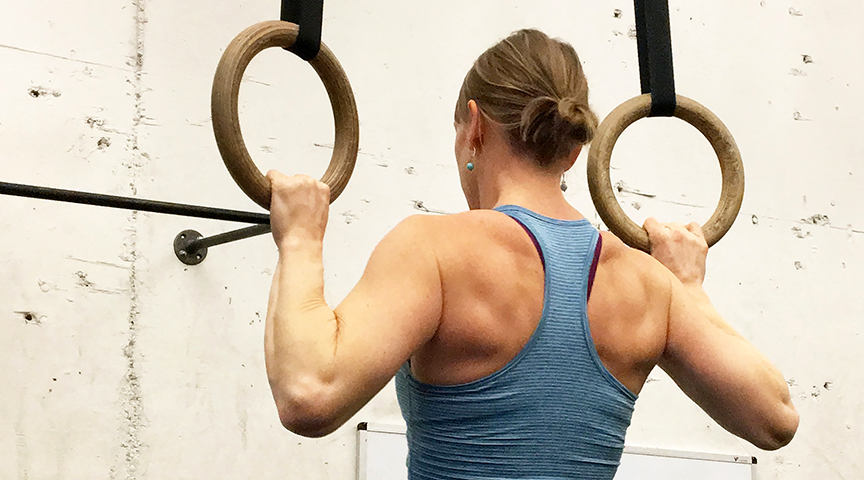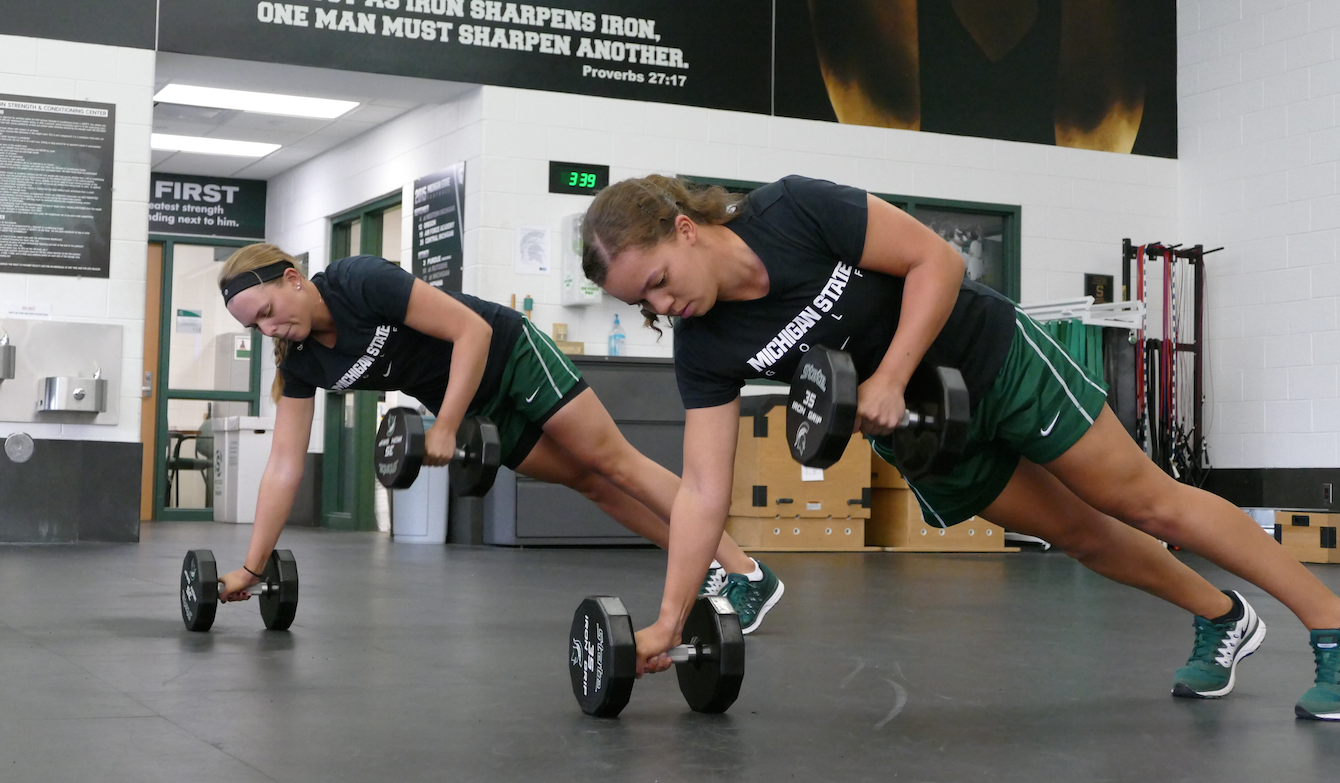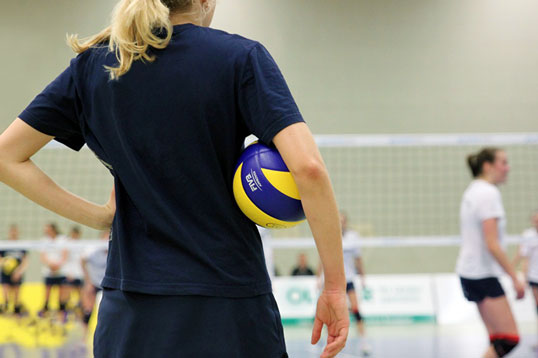Leveling the playing field
How athletic administrators and coaches can encourage females to embrace strength training

Athletic opportunities for female student-athletes have exponentially increased since the passage of Title IX. In the face of these opportunities is still the stark reality that female student-athletes feel like intruders in the male-dominated athletics realm. While the teams available to females continue to grow and participation numbers rise, athletic administrators and coaches must be intentional about the experience of the female student-athletes in their schools.
Nowhere is this truer than in the weight room.Ask any athletic administrator about the goals for their department, and it’s likely that the weight room is on the list. Whether it’s a new space, equipment or hiring a certified strength coach, athletic administrators are keenly aware that strength training is a key component of maximizing a student-athlete’s performance. Wise leaders take special measures to make sure that female student-athletes are just as engaged in the pursuit of athletic excellence in the weight room as male student-athletes. Athletic administrators and strength coaches can utilize these four ‘Cs’ to level the playing field for females in the weight room.
Complications
The most uncomfortable part of a workout for female student-athletes is psychological. The popular culture of today glamorizes female athletes that are lean and toned, but the gut-wrenching effort that’s required to obtain these goals is deemed “masculine.”
On a daily basis, female student-athletes are faced with a psychological choice in the weight room. They can oppose societal norms by digging deep into the workout, or “save face” by putting in a minimal effort that aligns more with cultural expectations of a delicate female. Many studies have investigated this psychological discomfort at the collegiate level, but one could logic that it presents even greater discomfort for high school athletes.
When programming for high school, consider that you are building a base of fitness for young people, which they will draw upon for life.
In “A Psychosocial Examination of Women’s Relationship to Strength Training and the Weight Room,” author Holly Crane notes that only 29 percent of college-aged students use resistance training at least two times per week, an overwhelming majority of which are men. Google searching images associated with the term “build muscle” yields more than 2,000 photos, but only 7 percent are specific to females. Many female student-athletes perceive a lack of support as an obstacle to their involvement in weight training, and this is where athletic administrators and coaches can help.
Communication
Communication is a powerful tool to inspire many when it’s used intentionally. It must be used with surgical precision when attempting to influence female student-athletes to embrace a cultural shift in their weight room experience. Clear communication from leaders also makes others feel supported, and this support can be a key component of inspiring others to go beyond expectations. Consider these points of emphasis:
- Communicate about the benefits of strength training. Routine physical activity is associated with improved psychological well-being through reduced stress, anxiety and depression. Strength training for females acts as a buffer, decreasing the risk of eating disorders. In some cases, simply improving knowledge about the benefits of strength training increase female participation.
- Communicate about the deterrents to strength training. Strength coaches should be keenly aware of the deterrents to strength training for female student-athletes and coach through them. Strength coaches are wise to communicate openly about how the girls might feel about exercising in front of their peers, and actively reframe this perception of the potential fear of negative evaluation. Basic exercise physiology should be included to teach the athletes the importance of the movement they are performing, and emotional appeals can be used to drive them toward resilience.
- Communicate support from the leadership. It is possible that athletic administrators underestimate their influence on cultural matters such as these. When advocating for the value of an experience that may seem countercultural, athletic administrators should overcommunicate. Visiting a female weight training session to give out some encouragement, public statements in booster meetings, pep rallies, and parent meetings are ways that athletic administrators can communicate their support for female athletes in the weight room.
Competition
The psychology of team competition is an under-utilized method to optimize female strength training. Team competition reshapes the mindset from “everyone is looking at me” to “my team is looking to me.”
 “Each semester, the students in our strength training classes draft a team in order compete in a series of physical tests requiring strategy and teamwork to complete,” said Kim Ledford, female sport performance trainer The King’s Academy in West Palm Beach, Florida.
“Each semester, the students in our strength training classes draft a team in order compete in a series of physical tests requiring strategy and teamwork to complete,” said Kim Ledford, female sport performance trainer The King’s Academy in West Palm Beach, Florida.
“For the female student athletes, we found that the greatest challenges as a coach were students desiring to have a ‘skip day,’ and students complaining that they physically can’t execute a specific movement. As a proactive measure, we accounted for this in my point system. Teams earn points for placing in competitions, or team members completing an extra mobility and soft tissue session. Teams lose points for skipping workouts or being tardy, and for saying, ‘I can’t.’
“We have noticed a significant difference in the student-athletes since introducing this competition. They hold one another accountable on the days we are working out, and they push one another to exhaustion in the name of competition. Since introducing this concept, we rarely hear the word ‘can’t’ uttered in our weight room.”
Coordinated
The human body is designed to perform specific movements. When programming for high school, consider that you’re building a base of fitness for young people, which they will draw upon for life. We strive to create functionally fit athletes who can take the movements learned in high school, and subsequently continue their fitness journey into adulthood. Strength coaches ought not relegate female athletes to developing only lower body and aerobic fitness, and ought not relegate male athletes to developing only upper body and agility training.
» RELATED: Misconceptions & strategies to female strength training
To be a well-rounded athlete, it’s imperative to train all aspects of fitness. Schools should seek to train “human body movements,” as opposed to male and female or sport movements. When both males and females are completing the same workouts, they can share with their peers about the challenges and successes they experienced. They have a common bond, and can commiserate and encourage together.
This is not an exhaustive list of ways to engage female student-athletes in a healthy commitment to strength training. This demonstrates two ideas that are critical to growth and improvement in any area: Be aware, and be intentional. The growth of opportunities can leave leaders in athletic departments ignorant to the fact that there are still many hurdles to leveling the playing field for female student-athletes.
Awareness is the cure for ignorance. Once an athletic administrator or coach becomes aware of a shortcoming in the athletic experience, intentional action becomes the solution to enhancing the life-changing impact of interscholastic athletics. This includes the experience of female student-athletes in the weight room.
Kim Ledford, CSCS, XPS is the female sport performance trainer at The King’s Academy in West Palm Beach, Florida and a former NCAA track & field student-athlete. Chris Hobbs, CMAA, Ed.S. is the director of athletics at The King’s Academy. He was a recipient of Coach & Athletic Director’s 40 Under 40 award, a program honoring the next generation of leaders in the sports industry.





